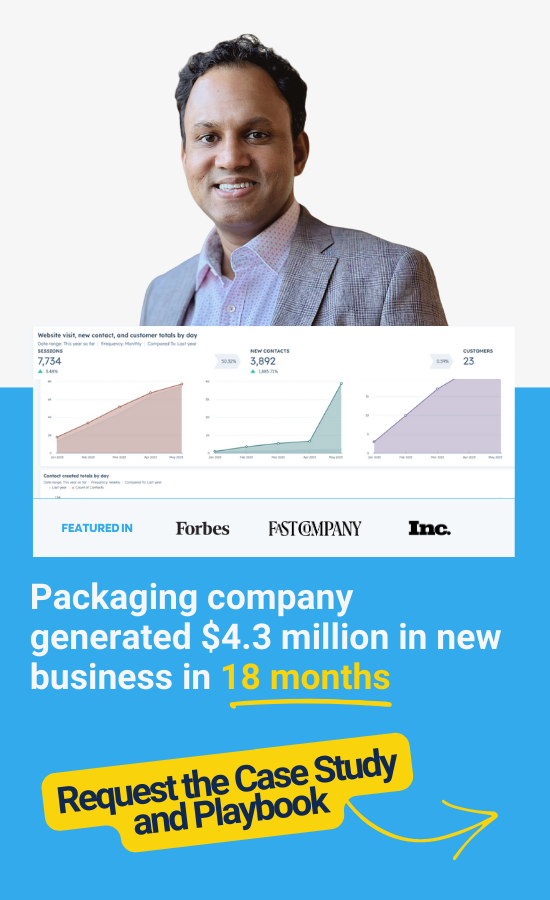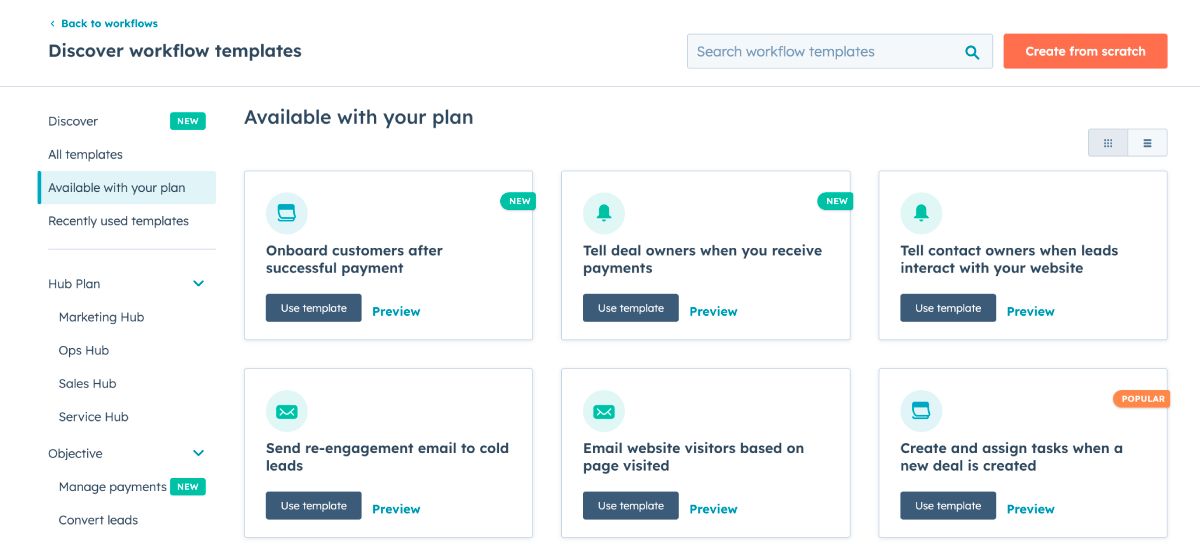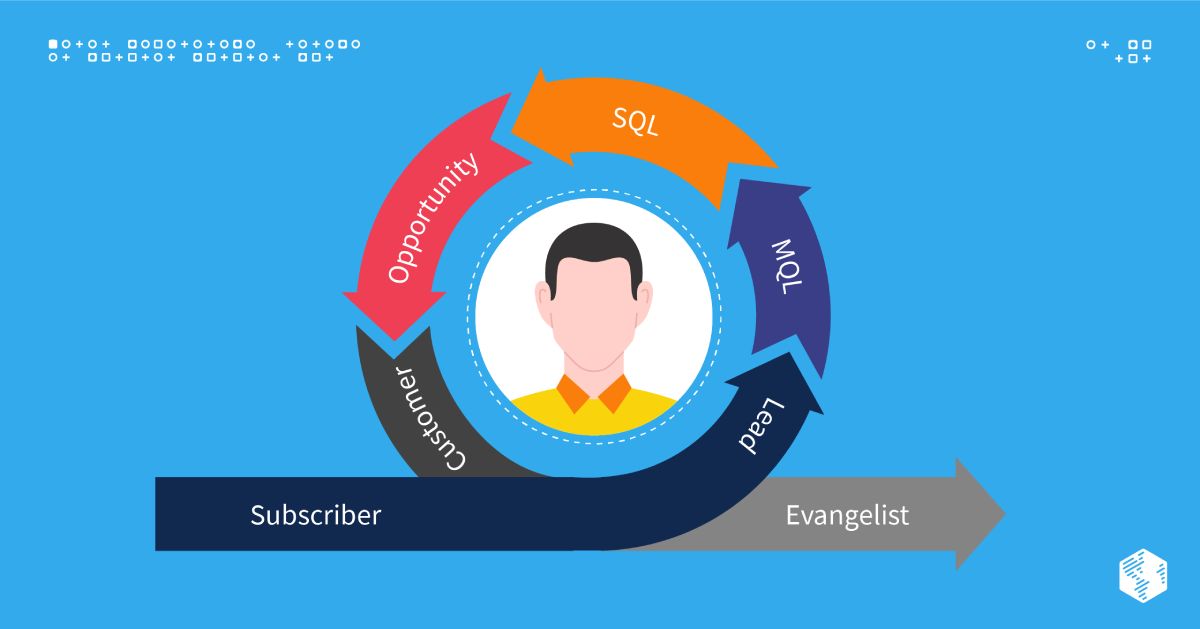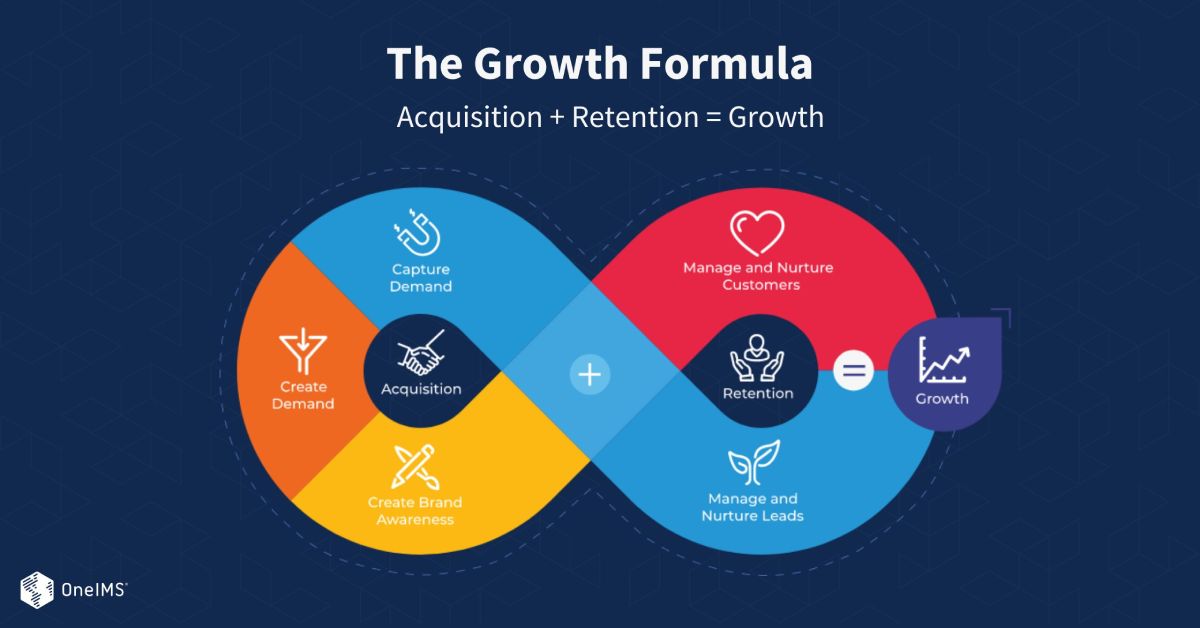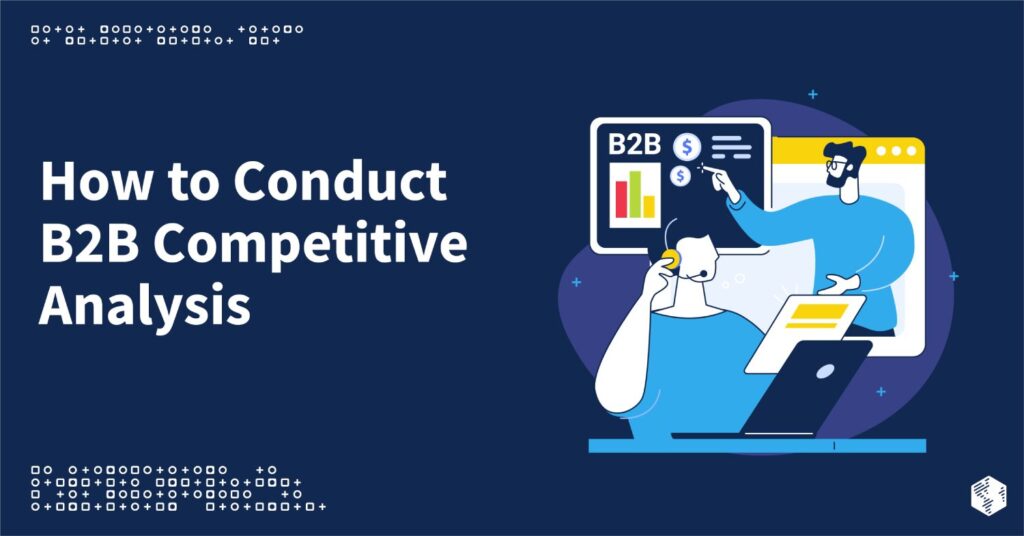In today’s fast-paced digital landscape, proficiency in business platform language isn’t just beneficial – it’s essential. HubSpot is a linchpin for optimizing marketing efforts among the various platforms.
Whether you’re an experienced marketer or an absolute novice, understanding HubSpot’s terminology is the key to unlocking its full potential.
Welcome to our comprehensive guide, where you’ll not only master essential HubSpot terms but gain insights that will elevate your marketing and sales IQ.
Overview of HubSpot’s Sales Hub and Marketing Hub
HubSpot, a comprehensive inbound marketing and sales software platform, plays a pivotal role in helping businesses attract, engage, and delight customers. It encompasses two main hubs:
HubSpot Sales Hub
It is tailored to streamline sales processes, efficiently track leads, and facilitate deal closures. Features include robust contact management, deal tracking, and automation for emails, providing sales professionals with a centralized platform to enhance productivity.
HubSpot Marketing Hub
Focused on inbound marketing strategies, the Marketing Hub assists businesses in attracting and engaging their target audience. It offers tools for content creation and management, SEO optimization, and lead nurturing through tailored email campaigns. Leveraging the Marketing Hub empowers businesses to generate and convert leads effectively.
The synergy between the Sales Hub and Marketing Hub within HubSpot’s platform creates a seamless experience for marketing and sales professionals. Understanding these hubs’ key features and benefits is paramount to mastering HubSpot and propelling marketing and sales efforts to new heights.
Key Features and Benefits of HubSpot
HubSpot’s feature-rich environment provides a multitude of benefits to enhance marketing and sales efforts:
- CRM Integration: Seamlessly manage contacts, deals, and customer interactions in a unified platform.
- Lead Tracking and Scoring: Prioritize leads based on their engagement with your website and content, enabling a focus on high-conversion prospects.
- Email Marketing Automation: Create personalized and automated email campaigns, allowing for efficient lead nurturing, audience segmentation, and campaign performance tracking.
- Content Creation and Management: The Marketing Hub offers a Content Management System (CMS) to create and manage website content, blog posts, landing pages, and more. It also includes SEO tools for content optimization and attracting organic traffic.
- Analytics and Reporting: HubSpot provides robust analytics and reporting features, offering insights into website traffic, lead conversions, email performance, and more. These data-driven metrics enable informed decision-making for optimizing campaigns.
By leveraging these features, businesses can streamline their marketing and sales processes, generate more leads, and drive sustainable business growth.
Understanding MQL, SQL, and SAL in HubSpot
In HubSpot, effective lead management involves categorizing leads into:
- Marketing Qualified Lead (MQL): Represents a lead showing a specific level of interest in products or services. MQLs are nurtured through targeted marketing campaigns until they are ready to be passed on to the sales team.
- Sales Qualified Lead (SQL): An MQL that has been further qualified by the sales team and is deemed ready for direct sales engagement. Qualification is typically based on budget, authority, need, and timeline (BANT).
- Sales Accepted Lead (SAL): The highest quality lead accepted by the sales team and actively pursued sales opportunities. SALs meet the ideal customer profile and require dedicated sales efforts for deal closure.
Understanding these distinctions allows businesses to prioritize leads effectively, tailor marketing and sales strategies, and optimize conversion rates.
Lead Generation and Nurturing in HubSpot
Effective lead generation and nurturing are integral components of a successful marketing and sales strategy. HubSpot provides powerful tools and methodologies, including:
Content Offers and Landing Pages
Create compelling content offers such as ebooks and guides and host them on landing pages. Capture leads’ contact information and nurture them through targeted email campaigns.
Email Automation and Workflows
HubSpot’s email marketing tool enables the creation of automated workflows, delivering personalized emails based on leads’ actions and interests. This facilitates building trust and keeping leads engaged until they are ready to make a purchase.
Lead Scoring and Segmentation
Track and score leads based on their interactions with your website and content. Identify and segment the most engaged leads for targeted marketing campaigns.
CRM Integration and Lead Management
Utilize HubSpot’s CRM system to manage leads effectively. The centralized platform tracks interactions, assigns tasks to the sales team, and monitors progress through the sales funnel.
By leveraging these lead generation and nurturing capabilities in HubSpot, businesses can attract the right audience, engage them with valuable content, and guide them toward making a purchase. The result is the generation of more qualified leads and driving revenue growth.
HubSpot’s Inbound Marketing Methodology
Inbound marketing, a customer-centric approach, focuses on attracting, engaging, and delighting customers through valuable content and experiences. HubSpot’s platform is built on this methodology, offering tools and resources for effective implementation across four stages:
- Attract: Create valuable and relevant content to address audience pain points. Utilize HubSpot’s content creation tools and SEO features to optimize content for discoverability.
- Engage: Use email marketing, social media, and marketing automation tools to deliver personalized and timely content. Nurture leads through their buyer’s journey.
- Delight: Focus on providing an exceptional customer experience that exceeds expectations. Utilize HubSpot’s customer service and survey tools to gather feedback and turn customers into brand promoters.
- Convert: Turn engaged and delighted leads into paying customers. Utilize HubSpot’s CRM system, lead scoring, and sales automation tools to streamline the sales process and close deals efficiently.
By following the inbound marketing methodology in HubSpot, businesses can create a customer-centric marketing strategy that attracts the right audience, engages them effectively, and ultimately drives business growth.
The Importance of the Customer Lifecycle Stages
Aligning content with different lifecycle stages is crucial for guiding leads through the buyer’s journey, building trust, and enhancing the overall customer experience. Recognizing the importance of the lifecycle stage in content marketing is essential for any marketer or salesperson looking to boost their effectiveness.
Understanding potential customers’ journeys and needs allows tailoring approaches and messaging to meet specific challenges. This targeted approach speaks directly to pain points and provides information, resources, and solutions at each stage of the decision-making process.
To effectively target the audience, recognizing that individuals are at different stages of the buying process is crucial. Segmenting the audience based on their lifecycle stage enables delivering the right content at the right time to the right people.
This approach allows for effective lead nurturing, addressing specific concerns, answering questions, and providing the value needed, ultimately positioning the brand as a trusted advisor throughout the decision-making process.
Recognizing the importance of the lifecycle stage allows for the development of a content strategy that aligns seamlessly with leads’ needs and interests, creating a more personalized and engaging experience. This approach increases the likelihood of converting leads into customers and fosters long-term loyalty and advocacy.
Creating Effective Email Campaigns in HubSpot
Email marketing remains a potent tool for nurturing leads, driving conversions, and building customer loyalty. In HubSpot, a robust email marketing tool provides a platform to create and execute effective email campaigns. Here are some best practices for creating impactful email campaigns in HubSpot:
Segmentation
Before launching an email campaign, segment the audience based on demographics, interests, and behaviors using HubSpot’s contact management system.
Personalization
Utilize dynamic content capabilities in HubSpot’s email marketing tool to tailor emails based on leads’ preferences, location, and other relevant information.
Automation
Set up workflows in HubSpot’s email marketing tool to automate campaigns, saving time and effort. Automated emails can be triggered by lead behavior or time intervals, ensuring timely and relevant content delivery.
A/B Testing
To optimize campaign performance, conduct A/B testing on different elements such as subject lines, CTAs, and email templates. HubSpot’s email marketing tool provides A/B testing capabilities, allowing a comparison of different variations to make data-driven decisions.
Analytics and Optimization
After launching email campaigns, it’s crucial to analyze their performance using HubSpot’s analytics and reporting features. Track metrics such as open rates, click-through rates, and conversions to refine campaigns and improve their effectiveness.
By following these best practices, businesses can create email campaigns that effectively engage leads, drive conversions, and contribute to the growth of the business.
Optimizing Your Website with HubSpot Tools
A well-optimized website is crucial for attracting and converting leads. In HubSpot, various tools can help optimize your website and improve its performance. Here are some essential HubSpot tools for website optimization:
Content Management System (CMS)
HubSpot’s CMS allows the creation and management of website content, blog posts, and landing pages. It provides a user-friendly interface and customization options, enabling the creation of a visually appealing and engaging website.
Search Engine Optimization (SEO)
HubSpot’s SEO tools aid in optimizing the website for search engines, improving visibility, and driving organic traffic. The tools analyze SEO performance, identify keywords with high search volume, and optimize content to rank higher in search engine results.
Website Analytics
HubSpot’s website analytics feature provides data on website performance, including metrics such as traffic sources, page views, and conversion rates. By analyzing this data, businesses can identify areas for improvement and make data-driven decisions to optimize the website.
Conversion Optimization
HubSpot offers tools and features to optimize the website for conversions. These include call-to-action (CTA) buttons, forms, and landing page templates designed to capture leads and drive conversions. Elements can be easily created and customized without any coding knowledge.
Mobile Optimization
With the increasing use of mobile devices, ensuring the website is mobile-friendly is crucial. HubSpot’s website optimization tools enable the creation of responsive designs that adapt to different screen sizes, providing a seamless user experience on mobile devices.
Leveraging these HubSpot tools allows businesses to optimize their websites for search engines, attract more traffic, and convert visitors into leads. A well-optimized website enhances online presence and contributes to the overall success of marketing and sales efforts.
Analyzing and Reporting on HubSpot Data
Data analysis and reporting are essential for measuring the success of marketing and sales efforts and making informed, data-driven decisions. HubSpot provides robust analytics and reporting features that offer insights into key performance metrics. Here’s how to effectively analyze and report on HubSpot data:
Dashboard and Reports
Customize the HubSpot dashboard to provide an overview of key metrics, allowing businesses to monitor the performance of marketing and sales efforts at a glance. HubSpot also offers pre-built reports that provide detailed insights into marketing and sales activities.
Attribution Reporting
Attribution reporting in HubSpot helps businesses understand the impact of marketing efforts on lead generation and revenue. It tracks the source of leads, identifies the most effective marketing channels, and attributes revenue to specific marketing campaigns. This information is crucial for allocating the marketing budget effectively and optimizing marketing strategies.
Lead Analytics and Conversion Funnel
HubSpot’s lead analytics and conversion funnel features provide insights into lead generation and conversion rates. Businesses can track the number of leads generated, monitor their progression through the sales funnel, and identify areas where leads drop off. This information helps identify bottlenecks in the sales process and implement strategies to improve conversion rates.
Email Performance
HubSpot’s email performance analytics enable businesses to track the performance of email campaigns. Metrics such as open rates, click-through rates, and conversions can be analyzed to understand the effectiveness of email marketing efforts. This information allows businesses to refine their email campaigns and improve their performance.
Social Media Monitoring
HubSpot’s social media monitoring tools allow businesses to track the performance of social media campaigns and monitor mentions of the brand across various social media platforms. Engagement metrics such as likes, shares, and comments can be analyzed to evaluate the impact of social media efforts and identify opportunities for improvement.
By analyzing and reporting on HubSpot data, businesses can gain valuable insights into the performance of marketing and sales efforts, identify areas for improvement, and make informed decisions to optimize strategies.
Unleashing Growth with HubSpot and The Growth Formula
Understanding HubSpot’s terminology is just the beginning of a transformative journey. At OneIMS, we recognize that true success lies in seamlessly integrating HubSpot into a Growth Formula Framework tailored to B2B businesses.
Capture Existing Demand:
- SEO and Google Search Ads: Leverage HubSpot’s robust tools to optimize SEO strategies, ensuring high visibility in organic search results.
- Other Intent Channels: Utilize HubSpot’s analytics to identify and target intent channels beyond Google, tailoring content to specific industry pain points.
Create Problem and Solution Awareness:
- Awareness Channels: Harness HubSpot’s content marketing capabilities for impactful blog posts, whitepapers, and webinars.
- Lead Magnets: Utilize HubSpot’s lead generation tools to create compelling incentives, such as ebooks and guides.
Create Brand Awareness:
- Thought Leadership Content: Showcase expertise with HubSpot’s content creation tools, positioning your brand as an authority.
- Social Media Engagement: Amplify your brand message through HubSpot’s social media integration, actively participating in industry discussions.
Manage and Nurture Leads:
- Segmentation: Leverage HubSpot’s CRM for robust lead segmentation based on demographics and behavior.
- Nurturing Campaigns: Implement automated email drip campaigns and retargeting ads using HubSpot’s marketing automation features.
Manage and Nurture Customers:
- Expansion Strategies: Utilize HubSpot’s analytics to identify cross-selling and upselling opportunities.
- Customer Advocacy Programs: Foster customer advocacy with HubSpot’s tools, encouraging reviews, testimonials, and referrals.
By aligning HubSpot with our Growth Formula Framework, B2B businesses can unlock a transformative approach to customer acquisition and retention. Integrating HubSpot’s powerful features with our comprehensive strategy provides a tailored solution for sustainable growth in the digital age.
Elevate Your B2B Business with OneIMS!
Ready to propel your B2B business to new heights? Explore how the synergy of HubSpot and our Growth Formula Framework has driven success for businesses like yours. Read our B2B case study now and witness the impact of strategic integration on growth.
Redefine your B2B business’s digital success. Let’s build a course for growth together!
